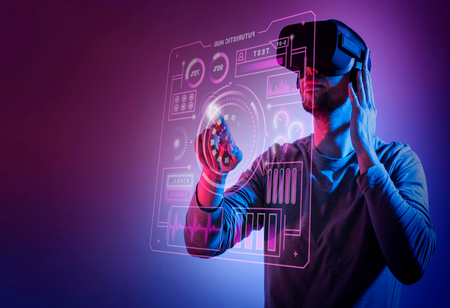
Today, the electronics manufacturing business is a pillar of the global economy, influencing a wide range of industries and areas of daily life. Through a vast range of goods and technologies, it fosters technical advancement, creates jobs, and links the world. The ability of the industry to adapt to evolving technology and market needs while addressing environmental and social concerns is critical to its growth and sustainability. Electronic manufacturing advancements have resulted in the development of cutting-edge products and technology such as cellphones, computers, medical devices, renewable energy systems, and much more.
These technologies have altered numerous industries and enhanced people's lives all across the world. A recent social media joke lists the numerous technological equipment and gadgets that the ubiquitous smartphone has supplanted. What it doesn't mention is the variety of even more hi-tech products that are being churned out at double speed to meet the expanding need for next-generation appliances and devices, which is keeping the world of electronics manufacturing busier than ever.
Ushering New Era
According to Statista, the worldwide statistics and business intelligence platform, revenue in the electronics market is forecast to reach US$837.20 billion in 2023, with a 12.62% annual growth rate, resulting in a market volume of US$1,347.00 billion by 2027. This kind of massive growth potential necessitates the development of new manufacturing technologies in an era of smaller product development cycles and a push for faster time to market. Furthermore, the supply chain for the electronics manufacturing business is complicated and global. It entails sourcing materials and components from many nations, which frequently necessitates cooperation between multiple suppliers. This supply chain's efficient management is critical for timely manufacturing and product quality. This also indicates that electronic products are among the world's most exported goods. Exports are frequently the lifeblood of economies in countries with strong electronics manufacturing sectors. This comprises finished goods as well as electronic components.
A Quick History Behind This Futuristic Technology
Though the names Virtual Reality (VR) and Augmented Reality (AR) were only coined in 1987 and 1990, respectively, the 'experiences' they reflect had been existing for several decades previous to them being ubiquitous in the digital era. To offer the uninitiated a quick overview, Virtual Reality (VR) is a computer-generated virtual environment in which the spectator is immersed and can interact with the scene as if it were real, albeit nothing is actual, only a simulation. In Augmented Reality (AR), on the other hand, digital content is placed on genuine items like machinery, buildings, etc., in the form of text, sound, or visuals.
The viewer can interact with the scenario by pointing out the camera on their smartphone or tablet. There is also Mixed Reality (MR), which mixes VR and AR experiences with interactive elements. Finally, XR, or eXtended Reality, combines VR, AR, and MR by combining all real-and-virtual environments to provide 360-degree image-based, extended reality experiences that can be accessed via a web browser (WebXR - the new application programming interface introduced in 2018).
The digital chief of a large technology corporation referenced an article from a business journal that declared the metaverse is dead during a recent Innovation Day event. Before the stunned audience could react, the screen's slide shifted and proclaimed that, while the metaverse is gone, the industrial metaverse is alive and well. In fact, it is one of the world's fastest rising trends. VR/AR is an important connection in linking the virtual and real worlds inside the industrial metaverse.
ABB, for example, sees the Industrial Metaverse as an emerging user-centered space that connects and enhances the digital and physical worlds through the integration of various recent technological trends such as digital twins, machine learning, the Internet of Things (IoT), mixed reality, and 5G. As the concept of the industrial metaverse becomes more widely recognised by manufacturers, it enables high levels of connectivity and data analytics, integrating the highly immersive virtual world with physical reality. After years of dominating the gaming sector, virtual reality and augmented reality (VR/AR) are finally finding their rightful position in the industrial domain.
Now Let's Delve into some of the benefits that players in the electronic manufacturing can reap:
Assembly and Quality Control:
AR technology enhances the assembly process by overlaying digital information onto physical components. Technicians can access real-time data, such as assembly instructions, quality control checklists, and product specifications, directly within their field of view. This not only reduces errors but also improves overall efficiency. Additionally, AR can be used for quality control inspections, allowing inspectors to identify defects or irregularities with greater precision.
Remote Assistance:
With the global nature of electronic manufacturing, AR and VR facilitate remote collaboration and support. Experts from around the world can virtually assist technicians on the factory floor in real-time, guiding them through troubleshooting procedures or complex assembly tasks. This not only reduces the need for experts to travel but also accelerates issue resolution, minimizing downtime.
Maintenance and Repairs:
AR is particularly transformative in the realm of maintenance. Technicians equipped with AR devices can access digital overlays of equipment schematics, maintenance histories, and step-by-step repair instructions, improving the speed and accuracy of repairs. This leads to decreased downtime and increased operational efficiency.
Supply Chain Optimization:
AR and VR technologies contribute to supply chain optimization by providing real-time visibility into inventory levels, order statuses, and logistics information. This transparency enables manufacturers to make data-driven decisions, anticipate potential disruptions, and optimize the flow of materials throughout the production process.
The Future Outlook:
As AR and VR technologies continue to evolve, the electronic manufacturing industry is poised for even greater advancements. The integration of artificial intelligence (AI) and machine learning (ML) into these immersive technologies will further enhance automation, predictive analytics, and adaptive learning capabilities.

